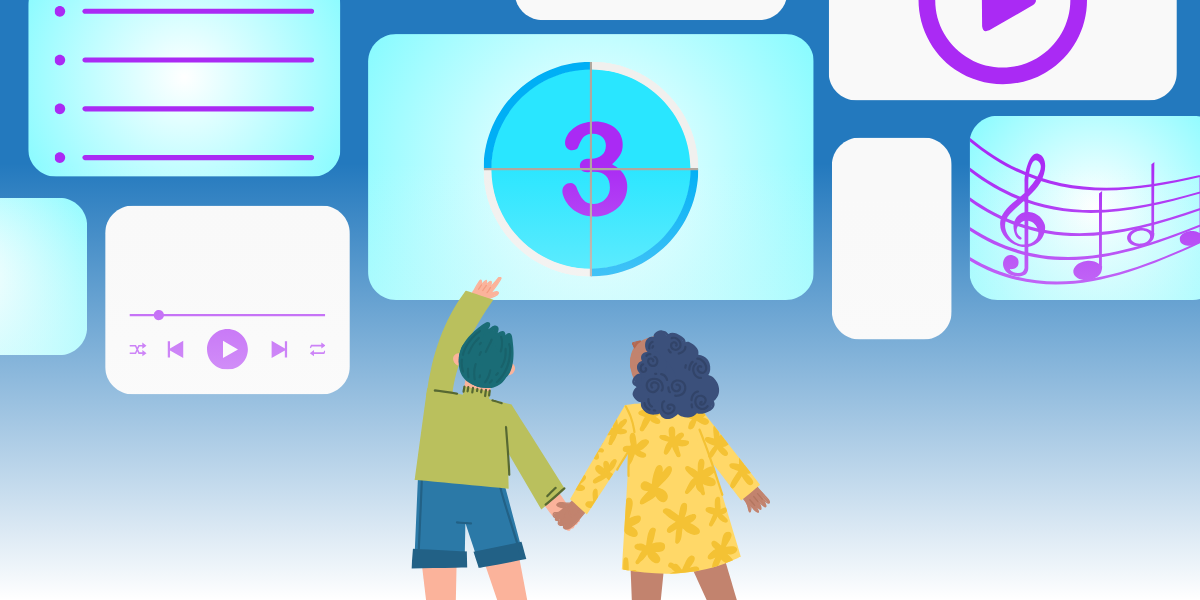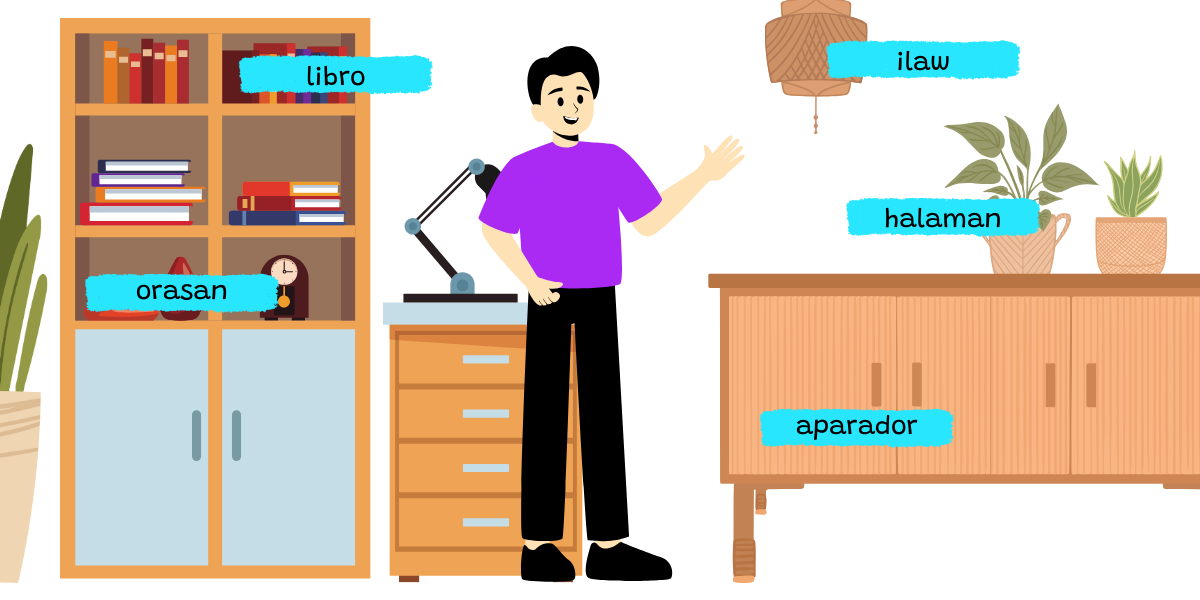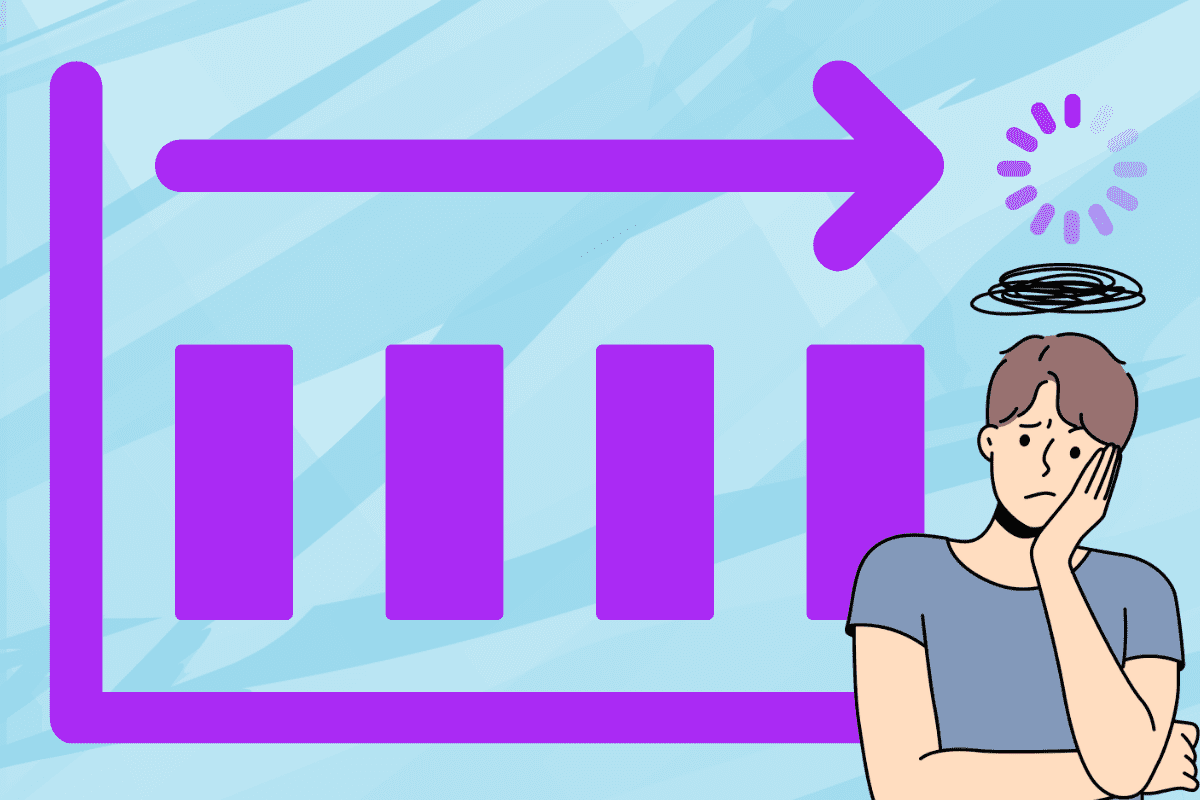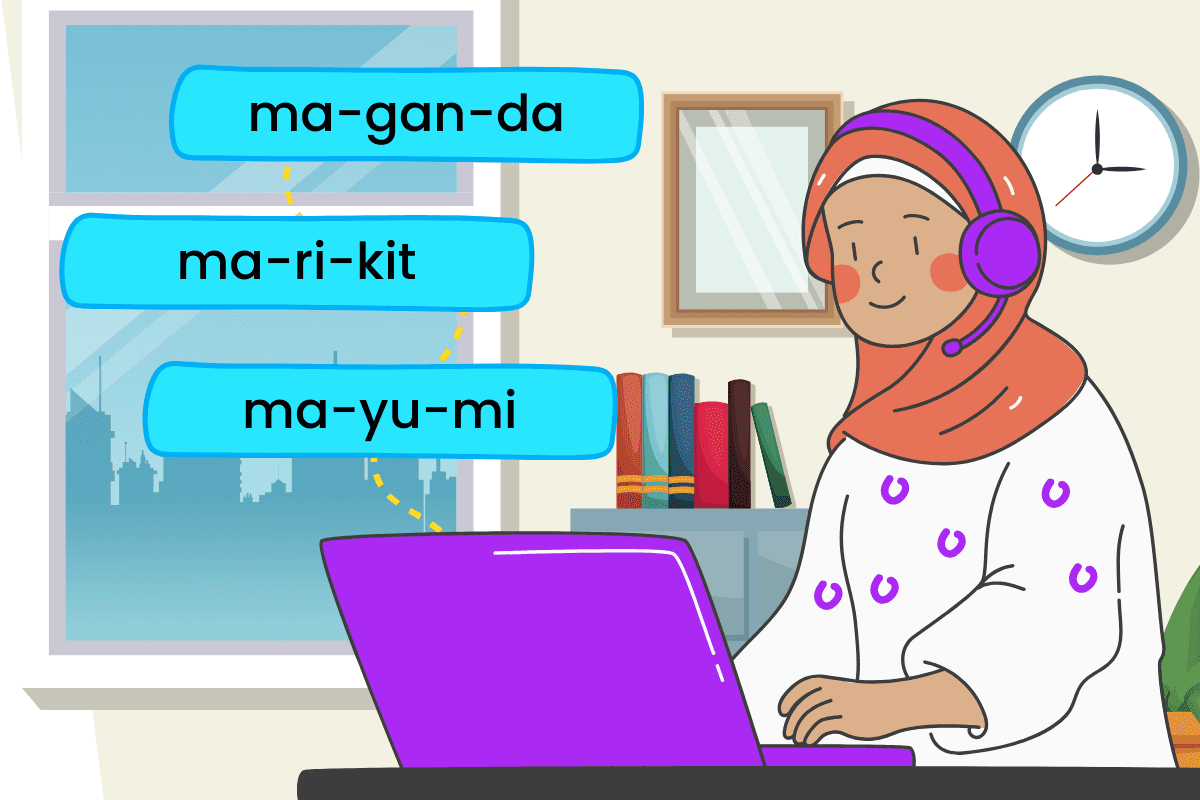Being an adult is difficult. You’re swamped with a lot of responsibilities that there seems to be no room for hobbies, let alone learning a language like Tagalog. So, what are the strategies for busy language learners?

1. Have A Notebook In Hand
You might think, “It’s the age of booming technology. What would I need a notebook for?” after all, you can simply encode using a laptop, tablet, or phone. It’s easier and faster, too.
However, research shows that manually writing something down helps you retain that information better than typing. Typing involves simply pressing keys, whereas writing involves shaping individual letters and detailed motions that can help aid active recall.

2. Change Your Device’s Language
What better way to integrate Tagalog learning than changing your device’s language settings?
This creates a linguistic environment that surrounds you with Tagalog words, phrases, and expressions, providing constant exposure and reinforcement of the language throughout your day. Whether you’re navigating menus, reading notifications, or interacting with apps, each interaction becomes an opportunity to reinforce your understanding of Tagalog.
Changing your device’s language settings to Tagalog can also provide context-specific vocabulary and phrases relevant to your digital interactions. You’ll encounter Tagalog words and expressions that are directly applicable to your digital communication needs, enhancing your language skills in real-world contexts.

3. Consume Related Media
A busy person also requires breaks. These breaks can involve watching movies, listening to music, and the like. Why not integrate Tagalog during this time period?
One way to do that is to watch Tagalog movies with subtitles in your native language. You can enjoy captivating storytelling while simultaneously exposing yourself to authentic Tagalog dialogue and expressions.
As you follow along with the plot, pay attention to the nuances of language usage and cultural references embedded within the dialogue. Armed with a notebook or digital device, you can jot down unfamiliar words and phrases, expanding your vocabulary and deepening your understanding of colloquial Tagalog.
Another method is to listen to Tagalog songs. Songs can be very helpful in gathering vocabulary due to their memorability.
As you groove to the rhythm of the music, pay close attention to the lyrics and their meanings. Reflect on the imagery, emotions, and themes conveyed through the songs, and note any new words or expressions that pique your interest. By engaging with Tagalog music, you not only enhance your language skills but also develop a deeper appreciation for Filipino culture and artistic expression.

4. Label Your Surroundings
Create an environment that is conducive to your language learning goals. Label the things in your surroundings with their Tagalog translation. Start by selecting common objects and areas in your home, such as furniture, appliances, and household items, and create corresponding Tagalog labels for each. For instance, “mesa” (table) for your dining table and “upuan” (chair) for your chairs.
You can go even further and add sentences or phrases related to that thing. For example, the front of your cabinet doors can be labeled “sarado” [closed] while the inside will be labeled “bukas” [open].
To maximize the effectiveness of your Tagalog labeling project, actively engage with the labeled objects in your daily routine. Practice saying the Tagalog words aloud as you interact with each item. Challenge yourself to use the labeled objects in sentences or conversations, incorporating the Tagalog vocabulary and phrases you’ve learned into everyday speech.

5. Set A Dedicated Study Time
Of course, you still need to dedicate a study period to learn about the basics and intricacies of Tagalog. This doesn’t have to be a very long time frame as long as you have a consistent language learning schedule. It can be as simple as 30 minutes a day for five days a week.
To make this study period more effective, set specific learning objectives or goals for each session, whether it’s mastering a new grammar concept, expanding your vocabulary, or practicing speaking and listening skills. Break down larger tasks into smaller, manageable steps to make progress more achievable and rewarding.
This time period, however, requires focus, which means shutting off any distractions that might divert your attention. Minimize distractions by silencing your phone, closing unnecessary tabs on your computer, and finding a quiet, comfortable space to fully engage with the material. Consider using noise-canceling headphones or ambient music to block out external disturbances and enhance concentration.

6. Use a Tagalog Learning App
As mentioned earlier, we are in the golden age of technology. Take advantage of the resources and channels offered–many of them accessible for free or at a minimal cost.
Language learning apps like Turong Wika, for example, are like Tagalog tutors you can bring anywhere and consult with anytime. This accessibility allows seamless integration of language learning into your daily routine, whether you’re commuting to work, waiting in line, or relaxing at home. By capitalizing on spare moments throughout the day, you can maximize your learning efficiency and progress toward your language goals with consistency and dedication.
Immerse Yourself
Most adults live a busy lifestyle, but that doesn’t mean that there’s no room for learning of any kind. All you need is a bit of creativity and consistency.
With consistency, determination, and the right mindset, you can make significant strides in your Tagalog proficiency and unlock new opportunities for communication, connection, and cultural exchange.
If you don’t know where to start, why not begin with Turong Wika?
Turong Wika is a language-learning app that will guide you through the basics of conversational Tagalog. From greetings to directions, all on your mobile device. You can go through the interactive lessons in your free time or quickly skim through the cheat sheet to recall the things you might have forgotten.
You can also test your knowledge in the Practice feature. Just choose a topic and the number of items you want to answer from five to 25. It’s that easy to use.
Integrate Tagalog into your lifestyle seamlessly. Scan the code below to download the app now!
Integrate Tagalog into your lifestyle seamlessly. Click on the button below to download the app now!






